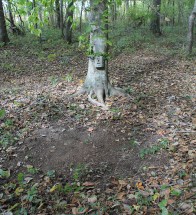
Contents
The Ultimate Guide: Making and Hunting Mock Scrapes
Mock scrapes, a hunter-made version of whitetail scrapes used to attract deer, have been a part of hunting media and folklore for decades. Deer hunters either love or hate them, with few in between. For example, Tim Andrus, host of “Rush Outdoors,” doesn’t touch them.
Jared Mills, co-host of “Midwest Whitetail,” is on the other end of the mock scrape debate.
Whether you’re for or against mock scrapes, it’s useful to learn more about them. Here’s your ultimate guide to mock scrapes.
Understanding Whitetail Scrapes
To understand mock scrapes, first realize what real scrapes are. These communal spots serve as a means of communication between deer. Most experts believe that general communication between deer is deposited via scent. Scrapes share common characteristics, with exposed soil, urination from deer, and a licking branch approximately 45 to 60 inches above the ground.
Scrape Myths

Scrapes aren’t immune to myths. The idea of a buck making a series of scrapes in a straight line is a big myth. Bucks (and does) can and will visit multiple scrapes to advertise their presence and collect information on other deer in the area. Another myth is that scrapes are great places to hunt over. Research shows that around 84% of scrape use occurs at night, making it better to hunt near them. However, approximately 16% of scrape use occurs during daylight.
Making Mock Scrapes
Your goal with making mock scrapes is to convince deer to adopt them. Place mocks in high-traffic areas, such as trail intersections, staging areas, pinch points, food source edges, near isolated water sources, and close to bedding areas. Find a good licking branch approximately 45 to 60 inches off the ground. Expose soil and create an oblong-shaped scrape. Optionally, deposit scent or urinate in it yourself. Ensure there is a vertical aspect to the licking branch, hanging out away from the tree trunk.
Using Mock Scrapes
Scrapes are best for inventorying bucks in your area and monitoring their activity levels, especially during the early season and pre-rut. Hunt near mock scrapes by setting up between good cover, like a bedding area, and a scrape. If you find a good scrape close to known bedding areas, hunt the downwind side of the scrape.
The Best Time to Make Mock Scrapes
Deer are constantly communicating through scrapes, so the best time to make mock scrapes is all year long. Scrape use gradually increases through summer, early fall, and peaks just prior to the rut. It drops off during peak rut and then slowly picks back up after the majority of does exit estrus. If you plan to make a mock scrape, do it now.

A skilled hunter, dedicated conservationist, and advocate for ethical practices. Respected in the hunting community, he balances human activity with environmental preservation.
